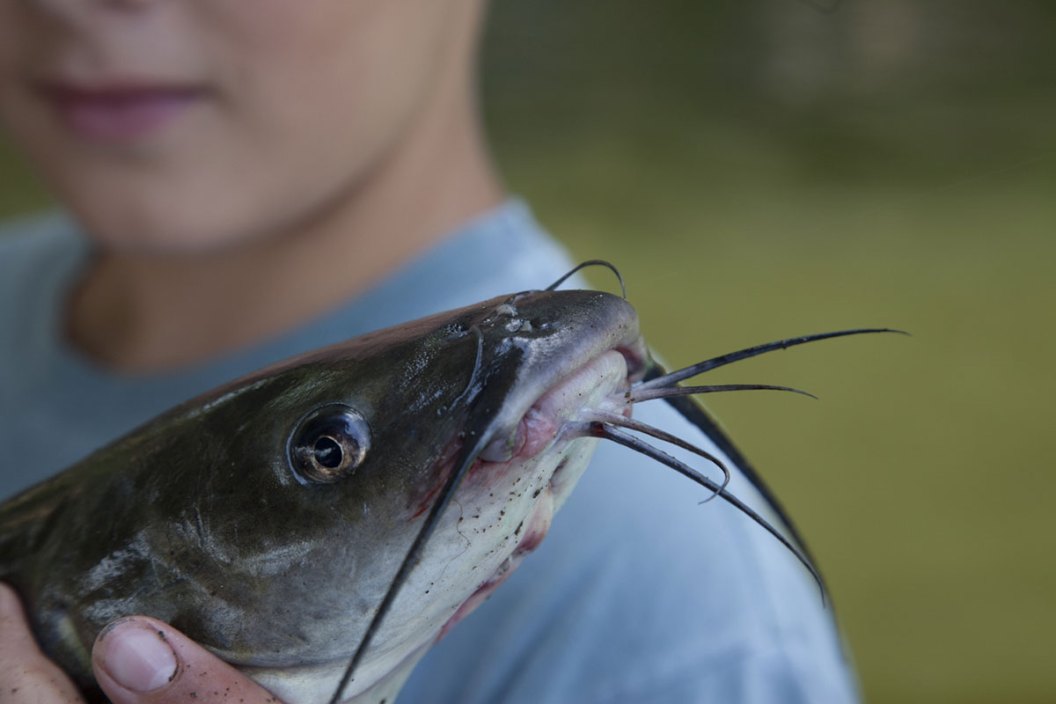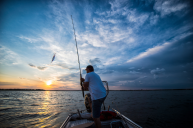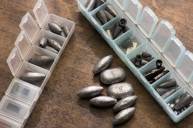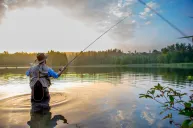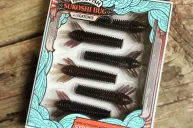Here's a list of fishing gear for catfish that should complete your search and set you on the right path.
A lot of us already know what the basics are when it comes to fishing. Every now and then the seasoned angler needs a refresher course to determine developments and advancements in gear and technique.
Then again, not everyone is as well versed in outdoor pastimes, and it stands to reason that gaining this type of knowledge on specific topics, like fishing for catfish, can only benefit those new to the discipline.
Either way, it's never too late to reinforce some simple gear and strategy knowhow in the catfish fishing department.
Here's an updated list of suggestions, and though it might not cover everything each individual wants or needs, it'll be more than enough to get a beginner started.
Catfish Fishing
A lot depends on the species of catfish that you are targeting whether it be flathead catfish, channel catfish, or blue catfish. The bottom line is that if you want to catch a cat there are more than enough types of rods, reels, and lines that will do the job.
But the serious catfishing enthusiast across the United States needs to consider location, time of the year, water level, and of course the species. Shore fishing for big flatheads is not the same as anchoring near the river flow just off the current and drifting a bait into some serious snag-ridden depths.
The same goes when fishing for big blues in deeper water where it's very important to have a hook set without line stretch. The good thing about catfishing tackle is that it doesn't really take a whole lot of gear to get started, even for the bigger species.
There are a whole lot of good sources of information on this subject, and it ultimately comes down to your personal preference. If you're like us, you'll try anything and everything when it comes to fishing equipment, but when it comes right down to it we all have to decide what we are specifically fishing for.
Catfish Rods
Here are four simple questions to ask before investing in a catfishing rod:
- Does it perform well under the stress of bigger fish?
- Is light enough to catch eating-size fish?
- Does it hold up well over time?
- What does it cost?
Now you might think that these are good line items for any fishing rod (and they are), but just slapping the term "catfish rod" on any old model doesn't mean that it does anything special.
At the end of the day you still need to identify the specific species of catfish that you will target, where you will be fishing, and what kind of angler you intend to be.
In other words, are you a fisherman that wants to catch a lot of smaller catfish for that Friday fish fry, or a trophy hunter/tournament angler looking for the biggest and best?
Here are five catfish rod materials that often come up:
- E-glass
- S-glass
- Composite
- Carbon fiber
- Graphite
The first three are affordable, durable, and sensitive enough to do the job. Graphite rods work well for targeting larger numbers of fish and holding the rod for longer periods of time during the day.
When going for size, dragging large catfish off the bottom and keeping them out of the rocks, anchor ropes, timber and everything else they hang up on is much easier with a longer seven-foot rod. In fact, some catfish anglers will use steelhead rods that go all the way up to 10 feet in length.
In most cases a medium or a medium-heavy action rod is plenty for most catfish fishing.
Baitcasting vs. Spinning Reels for Catfish
Spinning reels are a popular choice among all anglers for a wide variety of uses on freshwater. For catfish fishing, rods are often set into a rod holder, and spinning reels can make this a little cumbersome.
It's worth it to point out that many solid brands and styles of light saltwater reels made for pier fishing *(and even surf casting) can hold enough heavy line and withstand the pressures of a 50-pound fish, making them decent catfish choices.
If you're like most and just want to target some tasty, eating size whisker lips, most common spinning reels and spinning combos that are good for bass or pike will do. If you're setting your eye on the bigger and badder blues and flatheads of the watery world, you'll need to ramp things up a bit.
Probably the more popular way to run bait for big cats is by using a baitcasting reel. They sit in a rod holder in a much more basic way, and can be lifted out easier than a spinning rod and reel. If you're concerned with casting them, it really doesn't take much practice to get used to today's baitcasters. They are so well made, and the fact is that they are mainly used to drift bait over cover, even with floats. You likely won't need precise casts with this approach.
Baitcasters work quite well for all species of catfish and nearly all the favored techniques, and they can be used for fishing smaller fish and landing monster trophy class catfish alike. Try not to get caught up in thinking that these are strictly for the most experienced catfish anglers. They are certainly the go-to reels for veteran catfishermen everywhere.
The upside is that they hold a lot of line, can come equipped with a bait clicker, and their drag system is top notch for even the biggest fish.
The main downside is that they take more practice to use for those just starting out. There are a great variety of reels to try, but we're partial to the Abu Garcia Ambassadeur series, as it is one of the best.
Catfish Tackle
Just for the record, let's list some of the other obvious needs you'll have when you set out to catch some delicious catfish:
- Hooks
- Weights
- Floats
- Terminal tackle
- Line
- Rigs and lures
For those simply seeking to fill their bucket with some eating size channel cats (one to five pounds), the go-to hooks are usually treble hooks for dipping some prepared baits or "stink baits" in the water for catching numbers instead of size. Trebles in the #4, #6, and #8 sizes are generally the order of the day.
For blue cats, the best choice is the circle hook in either a 8/0 or the bigger 10/0 size. Larger sizes like these can turn in a cat's mouth and find the corner with ease for a good hookup.
These same hooks that are best used for blue catfish perform just as well for flathead catfish. The 8/0 catfish hook is a great all-around flathead catfish hook, particularly when using live bait. If you're using extra-large live baits, then consider increasing the hook size to a 10/0 catfish hook.
Terminal tackle includes swivels, sinker slides, and sinker bumpers to keep your weights from hitting the knot and the swivel repeatedly. Ball bearing swivels are the best to use in most fishing applications, but they are more expensive.
One underused but very effective tool is the peg float, which is placed just above the hook to help lift the angler's bait up off the bottom. The addition of a peg float helps keep the bait out of the mud and sediment and often helps the bait get into a better position, which increases the strike potential.
Whether you call them weights, sunkers, or dummies, these all have an obvious purpose in any kind of fishing and are especially useful in catfishing. While egg sinkers, swivel sinkers, and even split shot can be used, these often don't give an angler the needed feel they desire and can get snagged more easily.
Veteran catfishermen prefer the easy-to-find no-roll sinker as their primary rig for keeping bait in the strike zone. The flat sides keep the sinker from rolling around on the bottom of the lake or river.
Simple drift fishing sinkers will keep you safe when stumps, trees, roots, or just about anything else imaginable will cause you to hang up and break your line, especially when using a traditional drift fishing method.
Slip bobbers or floats slide that can up and down the line instead of being in a fixed position are best.They operate by placing a bobber stop on the line above it so that you can set the depth you're fishing. These can come in many sizes, styles, and colors that stick out for the angler to see, even in low light conditions.
What about fishing line? Many veteran anglers will still choose 20- to 30-pound test mono in conjunction with a good quality reel, simply because the drag system should do the rest. For those that want to be sure, good quality braided line is well known for its resistance to abrasion. That's what comes with targeting catfish in the deepest cover, and braided line can in the same test range can be used.
One upside to using braid is that it cuts through the water current better, and one downside is the wear and tear on your reel that's caused when trying to break free from a snag.
Get Out and Catch Some Catfish
To catch a catfish we've been known to use baitfish, cut bait, and sometimes shad on a jig, but it still all comes down to the angler finding fish and targeting them in the right way. Before you get to cut up some fillets or even pull out the hook with your pliers, you're going to have to spool up some line and hook up to some big fish.
Catfishing is as much about scouting and experience on the water as it is about what's inside of your tackle box. Knowing your quarry and where it lives means less time fishing in the wrong water, and more time with fish on your hook.
Whether you are fishing during the day or night fishing, the choice is yours, but having the right gear when the bite is on is almost as important as the fish's appetite.
Looking for a little more or even hot lunch for your hunting blind? Follow my webpage, or on Facebook and YouTube.
NEXT: WINTERTIME MUSKIE BARELY FITS THROUGH DRILLED HOLE
WATCH
